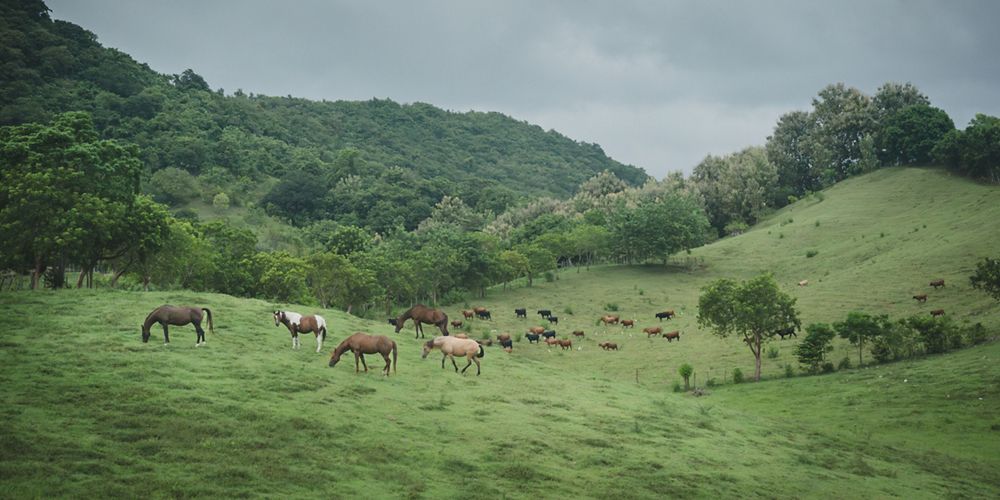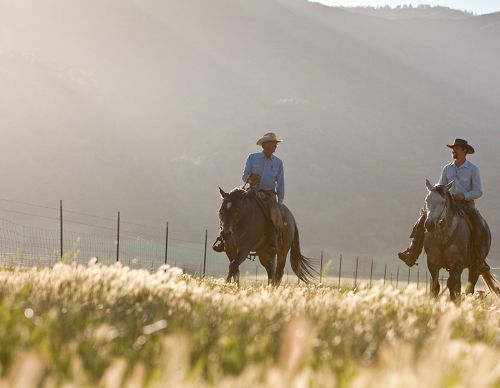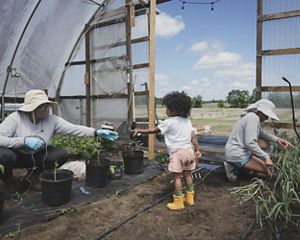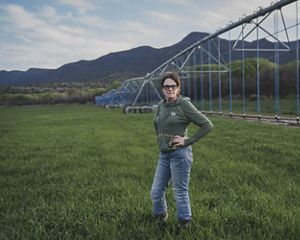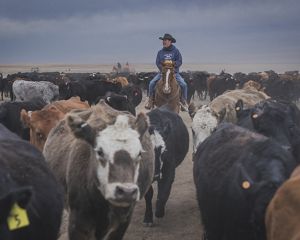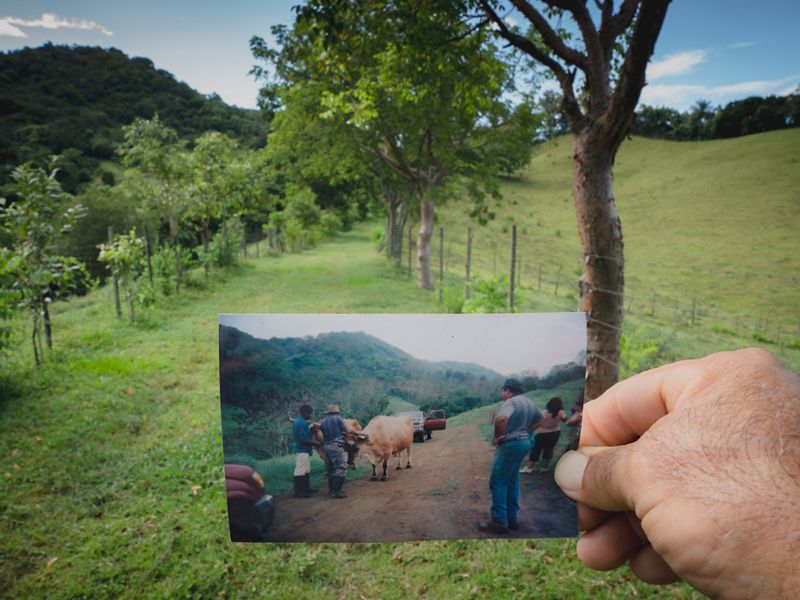
Before and After Andy Rivera and Myrna Comas Pagan look out over the countryside of Sabana Grande, Puerto Rico. They know that what they do on their 18-acre farm affects life far beyond their farms borders. © Morgan Heim
Angel “Andy” Rivera was four-years-old when he first laid eyes on Myrna Comas. She was the same age.
The then-strangers had been paired up to walk down the aisle at a wedding in western Puerto Rico, the island where both were born. She was the flower girl and he was the ring bearer. With each step toward the altar, he became more smitten by her.
“I loved her big smile and her long brown hair,” recalls Rivera, now 58.
When the ceremony ended, he told her he would marry her someday. As most little girls would do, she started crying—tears of fear, not joy—and ran to her mom. Her mom consoled her but also filed the encounter between her daughter and Rivera away in her head. Ten years later, Comas mentioned to her mom that she saw Rivera again, at a church event. Her mother reminded her that this is the boy who wants to marry her and, well, she should be nice to him.
A year later, he was her date for her quinceañera (her 15th birthday party) and, about seven years later, her fiancé. They recently celebrated their 34-year wedding anniversary.
What is at the heart of their deep, nearly lifelong, connection to each other?
Both say it is their mutual love of the land. They both grew up on farms and had careers in agriculture. For 32 years, Rivera worked at the Cooperative Extension Service in Sabana Grande, the Puerto Rico city where he and his wife live. He eventually was the county agent at the government agency, which provides technical assistance to farmers and ranchers. Comas was an agriculture professor at the University of Puerto Rico, head of Puerto Rico’s Cooperative Extension Service and the first-ever woman secretary of the Department of Agriculture on the island. She is currently writing a book about San Isidro Labrador, her town’s patron saint of farming.
“Land is life,” says Rivera as he looks out on Rancho AA, the 75-acre farm they bought 18 years ago. He hears the birds singing, feels the wind that blows in from the north and sees the lush forests on the perimeter of their fields. Having retired from their “desk jobs” earlier this year, they now can work on the farm full time.
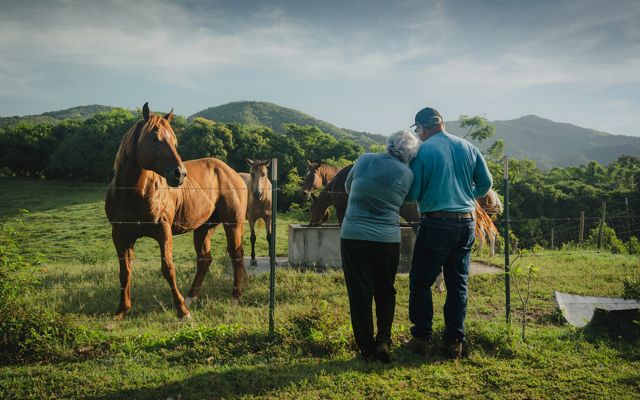
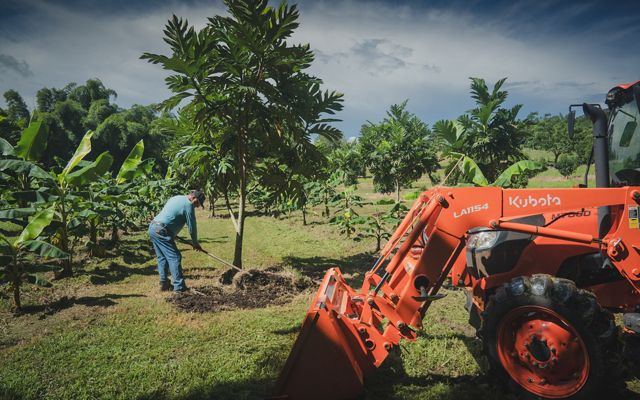
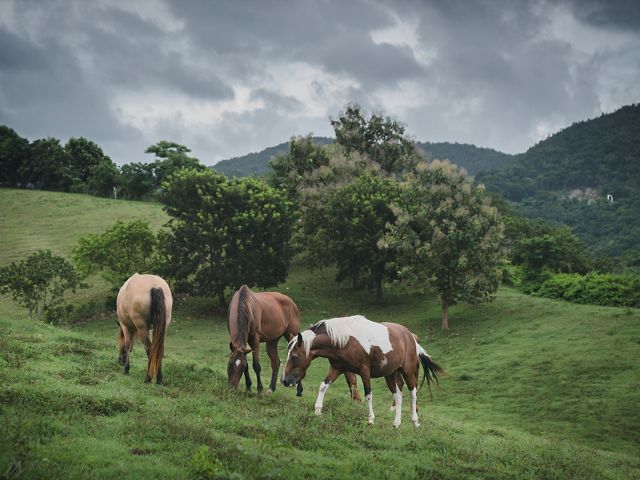
Why does the Farm Bill matter?
The Farm Bill provides funding for voluntary, incentive-based programs that help farmers, ranchers and other landowners address climate change while conserving their land and way of life.
The Farm Bill provides $6 billion annually for conservation. From incentivizing climate-smart agricultural practices to opening doors for permanent conservation through agricultural conservation easements, this critical bipartisan legislation benefits every single state in the country.
The land, he explains, is what provides people with food—which is particularly important on an island that is far from the mainland and currently has to import 80 percent of its food. It is what helps to keep the water clean. It is what helps people feel calm if they are having a stressful day. It is where horses, his spirit animal, run free.
Keeping the land healthy and productive, though, is not easy work—even for two people who had lifelong careers in agriculture. They experience the typical problems most farmers face, like fluctuating and unpredictable prices for their produce, increased costs for farm supplies and a small pool of people who are interested in working on a farm. On top of that, they have island problems—namely, hurricanes, which are becoming stronger and more frequent, and droughts. Rivera and Comas, therefore, are grateful for the support they receive through conservation programs included in the Farm Bill, which is the United States federal government’s largest investment in the conservation, restoration and management of farms, ranches and forest land.
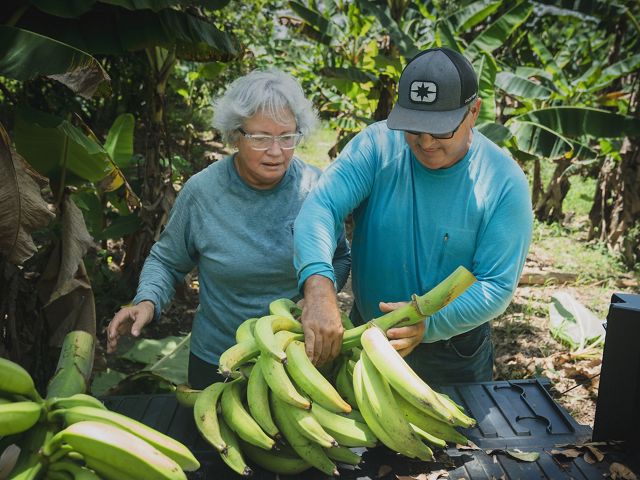
A Typical Day on the Farm
Being in the Caribbean heat from sunrise to sunset doesn’t faze the two lovebirds. They move forward, even as they get sweatier and sweatier when they take care of their chores: planting or harvesting avocados, plantains, soursop and other fruit; repairing fences in the paddocks where their cattle graze; moving their cattle to new paddocks; checking on their horses; laying mulch around the fruit trees; and bringing produce to local restaurants.
They can even tolerate the other weather extreme—heavy rain—that is common on this island.
“After a big storm or a hurricane,” Rivera shares, “I know people say ‘This man is crazy. He has to replant everything.’ But I am born for this. I can handle it.”
Rivera is happiest when he is in his “office,” the big orange tractor he uses to clear fallen limbs and other natural debris. He skillfully and confidently maneuvers it up and down the sloped areas of the farm.
Comas has her happy place, too. Her “office” looks like a one-seater golf cart but has sharp blades on the bottom that whack weeds and the tall grass growing around the crops. It is better to cut them back this way than to use chemicals to do so, Comas says. Moonie and Arthur, their Australians cattle dogs, also protect the crops by chasing the iguanas that come to nibble on their stems.
Quote: Andy Rivera
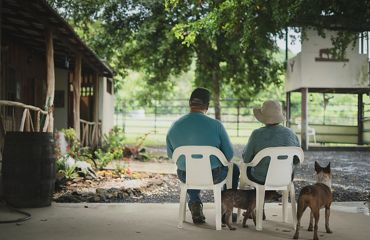
I know people say ‘This man is crazy. He has to replant everything.’ But I am born for this.
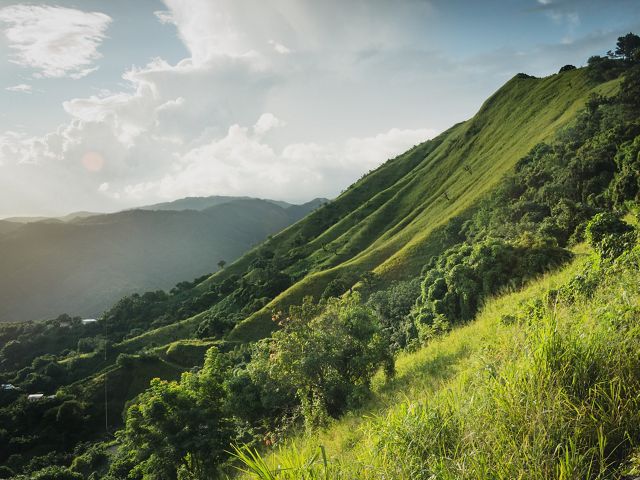
The Joint Chiefs Project: A Table of Experts
Given their commitment to agriculture, it is not surprising that Rivera and Comas almost instantly agreed to be the first farmers in Puerto Rico to participate in a new project funded by the Farm Bill. The project, started in 2018, was designed to help farmers and ranchers in the central mountains of western Puerto Rico implement farming practices that will address a few threats the island faces: catastrophic wildfires, severe soil erosion, degraded wildlife habitat and low-quality drinking water. The region where they live was chosen for the project because it was hit hard in 2017 by hurricanes Irma and Maria.
The three-year project was part of the Joint Chiefs Landscape Restoration Partnership, which is led by the chiefs of two United States Department of Agriculture agencies: the Natural Resources Conservation Service and the Forest Service. It was the first Joint Chiefs’ project in Puerto Rico and it eventually included 37 small-scale farmers and ranchers. Since then, another Joint Chiefs’ project has been started, in eastern Puerto Rico.
“One of the best things about the Joint Chiefs [project] is having so many different types of experts at the table,” says Rivera. “Also, they helped us put into practice what we had learned about in theory.”
A Day in the Life on Rancho AA
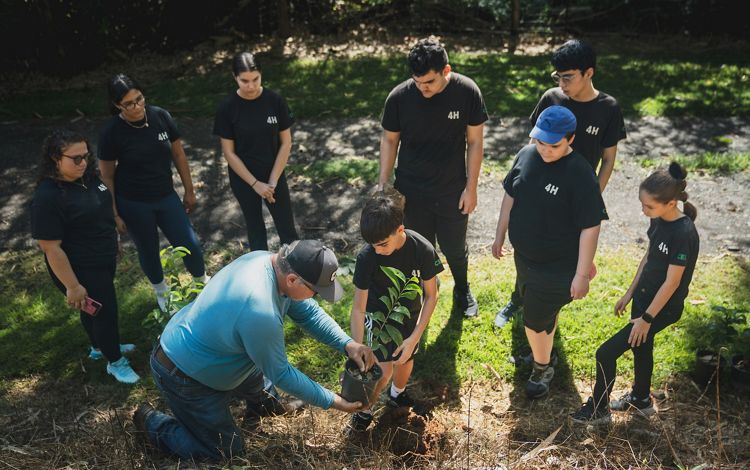
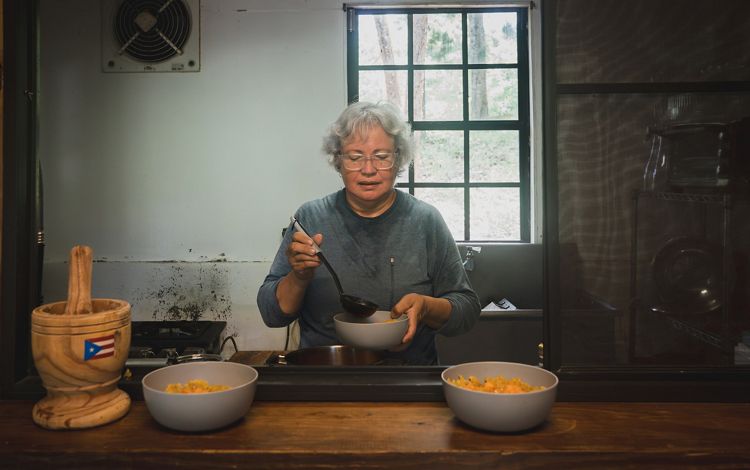
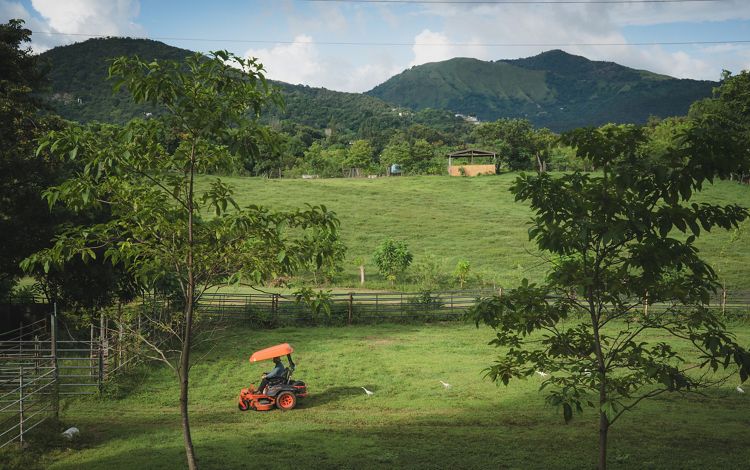
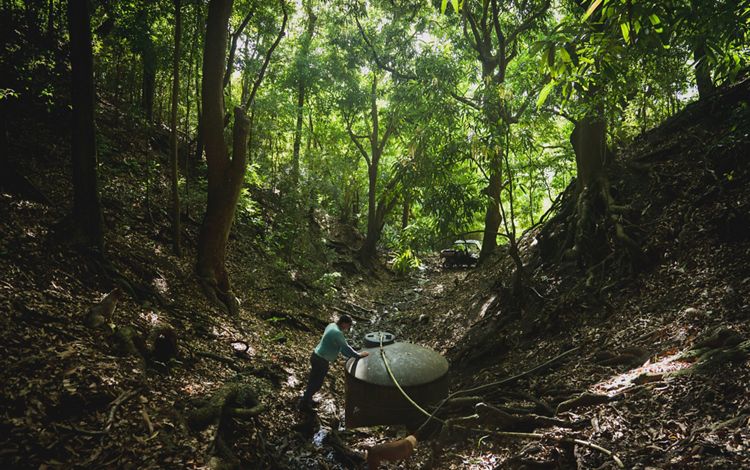
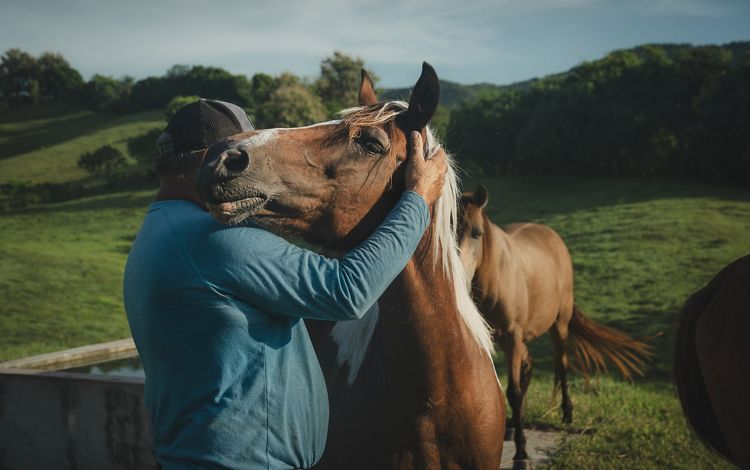
For Rivera and Comas, a particularly rewarding aspect of the project was planting trees and then seeing them grow. They have planted more than 550 trees, of which 350 are from the project. Most of the trees are endangered species, mainly planted along the edges of the grassy paddocks where the cattle roam. The trees provide the cattle with much-needed shade, absorb carbon and have become home to 33 species of birds.
The trees, as well as grass-lined ditches the two farmers created with funding and technical assistance from the project, also help hold the soil in place so there is less erosion. They don’t want soil from their farm running into the spring-fed creek that weaves through their property and, eventually, into one of the rivers that feed the Caribbean Sea 20 miles away. They understand the connection between healthy farms upstream and healthy oceans downstream. They also understand the role they are playing in helping to keep their community’s drinking water clean. Their city currently holds the honor of having the cleanest drinking water in Puerto Rico.
“When it rains now, I see that the creek is clear,” says Rivera, recalling that the water was murkier before they planted trees and created grass-lined ditches. “That means we are doing a good job uphill.”
Also, through the project, they created a fire break around the perimeter of their farm. It looks like a low-lying grassy lane and it has already helped prevent two neighboring wildfires from spreading onto their land. They, too, received funding through the project and another Farm Bill-funded program (the Environmental Quality Incentives Program) to build more paddocks on their land. A paddock is a fenced-in area, with a big manmade watering hole, where cattle graze. The animals are moved to a new paddock about once a month. This practice, called rotational grazing, has numerous environmental and economic benefits.
“All of these Farm Bill programs have helped us protect our farm and make our dream come true,” Comas says.
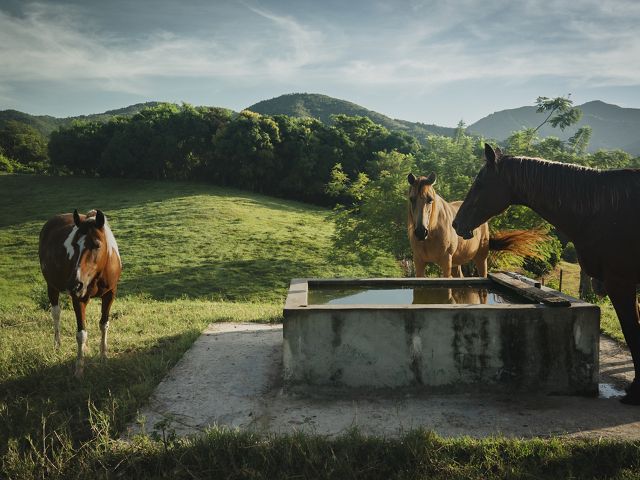
Spreading the Word
With the Joint Chiefs project completed, Rivera and Comas have shifted gears. In between taking care of their farm, they are doing the other thing that runs through their veins: teaching. They are teaching farmers and ranchers—many who are new to the profession and are in their 20s and 30s—what they learned through the Joint Chiefs project and their long careers in agriculture. For example, what plants are most drought and hurricane tolerant, what federal assistance is available via the Farm Bill and why grazing cattle (instead of feeding them hay) is better for the animals and the land. They also are teaching people who have farmed for years how to create a business plan, a skill some of them were never taught. And they are teaching young teens in the local 4-H club that being in nature is good for the soul.
That’s why Rivera’s and Comas’ phones are often ringing and buzzing—calls and texts from their students who need help. Sometimes the teaching is hard, like after a major hurricane when so many people are at a loss for what to do. But the two teachers stick with it. Why? Because they want their island to have a dependable supply of food and the farms and ranches on the island to play a role in mitigating climate change. They, too, want other farmers to feel the joy they feel from working the land.
“I am so rich,” says Comas, flashing her big smile. “I love that I get to be in the natural environment every day. I love being with the animals. I feel like I can talk to them. I love planting seeds that turn into food. All of this I love. It is worth more than money.”
Speak Up for Nature
Support Farm Bill Conservation Programs
The Farm Bill offers a critical lifeline to farmers, ranchers and landowners who are interested in better conserving and managing their lands. Tell Congress: pass a Farm Bill that supports conservation.
